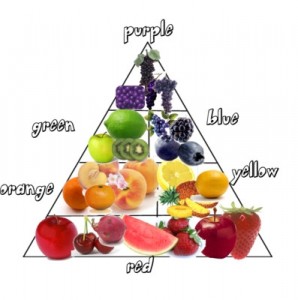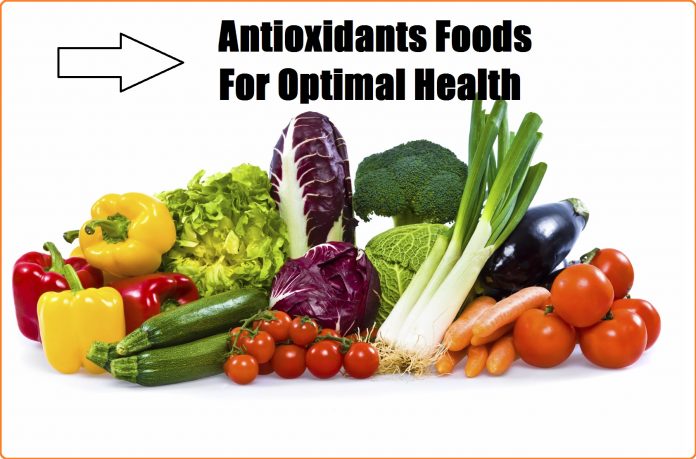As we know that vitamins A, C, and E, as well as carotenoids and the mineral selenium, are exogenous antioxidants that are also referred to as standard dietary antioxidants because they are commonly consumed through the diet or used in a multivitamin preparation. Other types of exogenous antioxidants include various kinds of polyphenols found in the fruits, vegetables, and herbs. Some of these polyphenols are frequently added to the multivitamin preparation in small quantities. We will discuss how to get antioxidants naturally to body and sources of the standard dietary antioxidants next, detailing how one may obtain them from one’s diet.
Table of Contents
how to get antioxidants naturally to body
Vitamin A
Liver from the beef, pork, chicken, turkey, and fish is the richest source of vitamin A, 6.5 mg of vitamin A per 100 grams of liver. Vitamin A is also found in the sweet potatoes, carrots, leafy greens, and squash, as well as in melons, peppers, tuna, and apricots.
B vitamins
Sources of vitamins B include Brewers yeast, cereals, milk, leafy vegetables, liver, and intestinal bacteria.
Vitamin C
 The richest dietary sources of vitamin C are fruits and vegetables. They include rose hips, red peppers, parsley, guava, kiwi fruit, broccoli, lychee, papaya, and strawberries. Each of these fruits or vegetables contains approximately 2,000 mg of vitamin C per 100 grams of fruit. Other sources of vitamin C include oranges, lemons, melon, cauliflower, grapefruit, raspberries, tangerines, passion fruit, garlic, spinach, and limes. They contain about 30 – 50 mg of vitamin C per 100 grams of fruits and vegetables.
The richest dietary sources of vitamin C are fruits and vegetables. They include rose hips, red peppers, parsley, guava, kiwi fruit, broccoli, lychee, papaya, and strawberries. Each of these fruits or vegetables contains approximately 2,000 mg of vitamin C per 100 grams of fruit. Other sources of vitamin C include oranges, lemons, melon, cauliflower, grapefruit, raspberries, tangerines, passion fruit, garlic, spinach, and limes. They contain about 30 – 50 mg of vitamin C per 100 grams of fruits and vegetables.
Carotenoids or Beta-carotene
The richest sources of carotenoids are sweet potatoes, carrots, spinach, mangoes, cantaloupes, apricots, kale, broccoli, parsley, cilantro, pumpkins, winter squash, and fresh thyme, although, there are more than 6 hundred carotenoids in various plants, fruits, and vegetables. Among them, beta-carotene, alpha-carotene, lycopene, lutein, xanthophylls, zeaxanthin, and beta-cryptoxanthin are significant. We do not know much about many of the other carotenoids. Beta-carotene, alpha-carotene, lycopene, and lutein have been studied lengthily in laboratory experiments and in humans. Here are 10 natural remedies to strengthen your immune system.
Vitamin E
The richest sources of vitamin E include wheat germ oil – 215 mg per 100 of grams of oil, sunflower seed oil -56 mg per 100 grams of oil, olive oil -12 mg per 100 grams of oil, almond oil -39 mg per 100 grams of oil, hazelnut oil -26 mg per 100 grams of oil, walnut oil -20 mg per 100 grams of oil, and peanut oil -17 mg per 100 grams of oil. Sources for small amounts of vitamin E (0.1 to 2 mg per 100 grams) include kiwi fruit, fish, leafy vegetables, and whole grains. In the United States, fortified breakfast cereals are very good sources of vitamin E.
At present, most of the natural form of vitamin E is extracted from the vegetable oils, primarily soybean oil. Vitamin E exists in 8 different forms: four tocopherols (alpha-, beta-, gamma-, and delta-tocopherol) and 4 tocotrienols (alpha-, beta-, gamma-, and delta- tocotrienol). Of these, alpha-tocopherol has most biological activity. Vitamin E also exists in the natural form, commonly indicated.’ The synthetic form is referred to as ‘dl.’ The stable esterified form of vitamin E is available as alpha-tocopheryl acetate, alpha-tocopheryl succinate, and alpha-tocopheryl nicotinate.
L-carnitine
L-carnitine is made in the body, but we can also obtain it from our diet. The highest concentration of L-carnitine is found in red meat about 95 mg per 3.0 ounces of meat. In contrast, chicken breast has only 3.9 mg per 3.5 ounces. L-carnitine is present in all cells of the body.
Polyphenols
As mentioned previously, polyphenols are present in the herbs, fruits, and vegetables. Examples of them include resveratrol found in grape skin and seeds, curcumin -found in the spice turmeric, ginseng extract, cinnamon extract, and garlic extract. Resveratrol in exacting has drawn a great deal of attention in recent years; it is found in grape skin and grape seed. As we have learned, other polyphenols include tannins, lignins, and flavonoids. Major sources of flavonoids include all of the citrus fruits, berries, ginkgo biloba, onions, parsley, tea, red wine, and dark chocolate help to lose weight. Over five thousand naturally occurring flavonoids have been characterized by various plants.

